Her iconic afro silhouette. The recognizable cadence of her voice: both urgent and patient. Oakland-based activist and educator Angela Davis is a cultural icon whose life’s work has influenced so many. Her impact on generations past and present is the subject of Angela Davis – Seize the Time, an exhibition on view through June 11, 2023 at the Oakland Museum of California.
At OMCA, Angela Davis’ Influence is Felt Through Generations
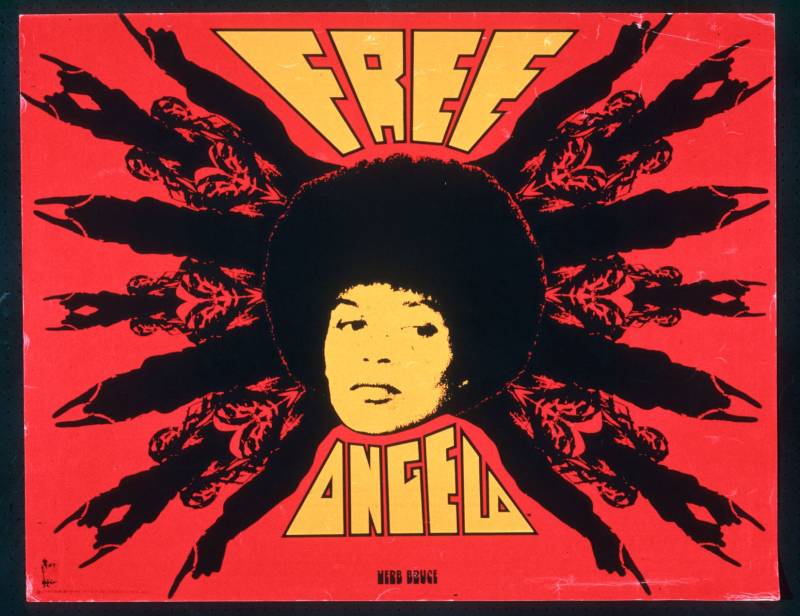
The show centers around Davis’ incarceration, trial and the global campaigns to “Free Angela Davis.” Posters and artwork inspired by Davis line the walls. There are buttons, newspapers and vinyl albums enclosed in a glass case, along with an original pamphlet of Nikki Giovanni’s “Poem of Angela Yvonne Davis.” A video interview of Davis from 2019 plays on loop in one area – on a recent visit, her voice reverberates through the space as I walk around.
But at the heart of the exhibition is the extensive archive of documents and media collected over decades by community archivist Lisbet Tellefsen.
“Most archival material never sees the light of day in this way,” says Tellefsen. “You might get a poster exhibit. You might have a research project where you would go into the stacks and request a box where you could see a handful of documents. But it is really rare for this type of material in this amount to be actually seen on gallery walls. To me, that’s revelatory.”
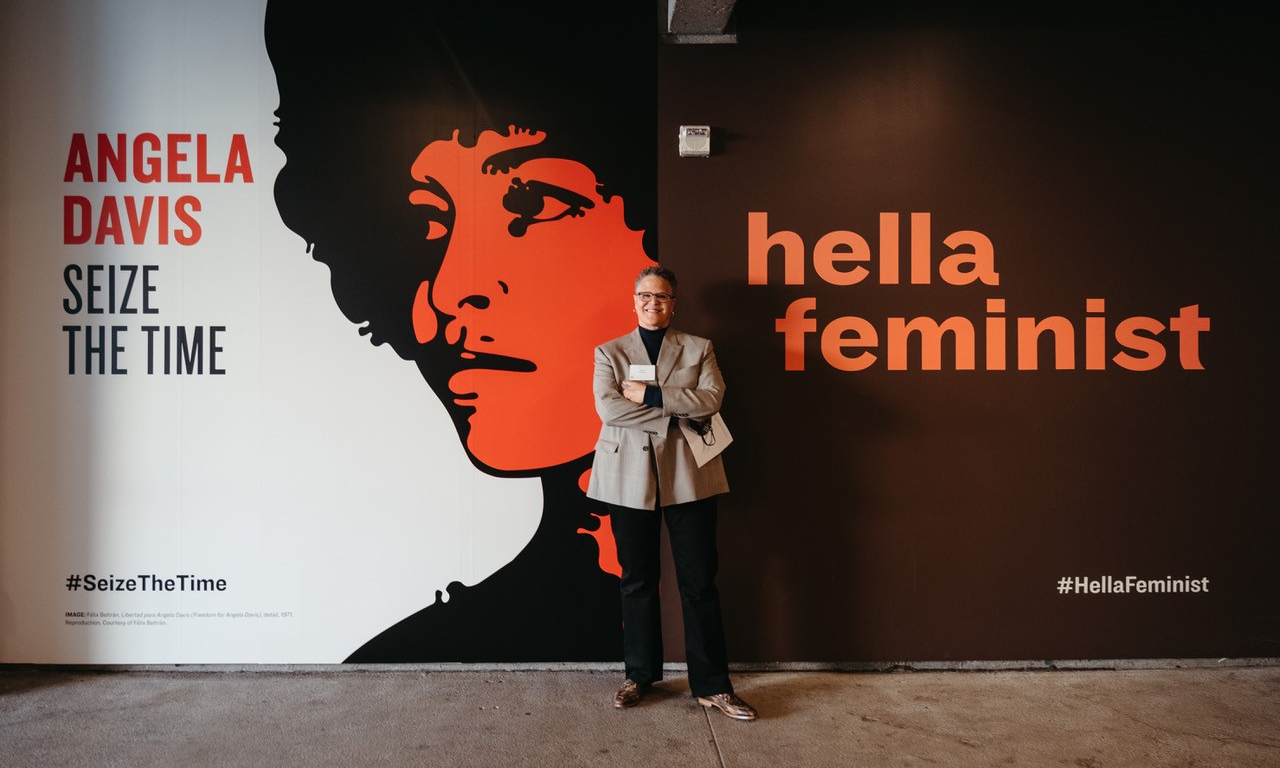
Tellefsen has known Davis socially for 40 years and was excited to preserve the history of Davis’ life and activism. “Every time I would visit Angela’s house, she would give me something else lying around,” Tellefsen recounts. “One time she took me to her storage unit in East Oakland and is giving me posters and I’m like, ‘Hey, I promise I’ll take good care of them.’”
Some of the very first Angela Davis posters Tellefsen collected — which are included in the show — came from a trip to Cuba in the mid-1980s, where the archivist stumbled across a shop selling old revolutionary posters, including ones in solidarity with African Americans, like Davis and the Black Panthers.
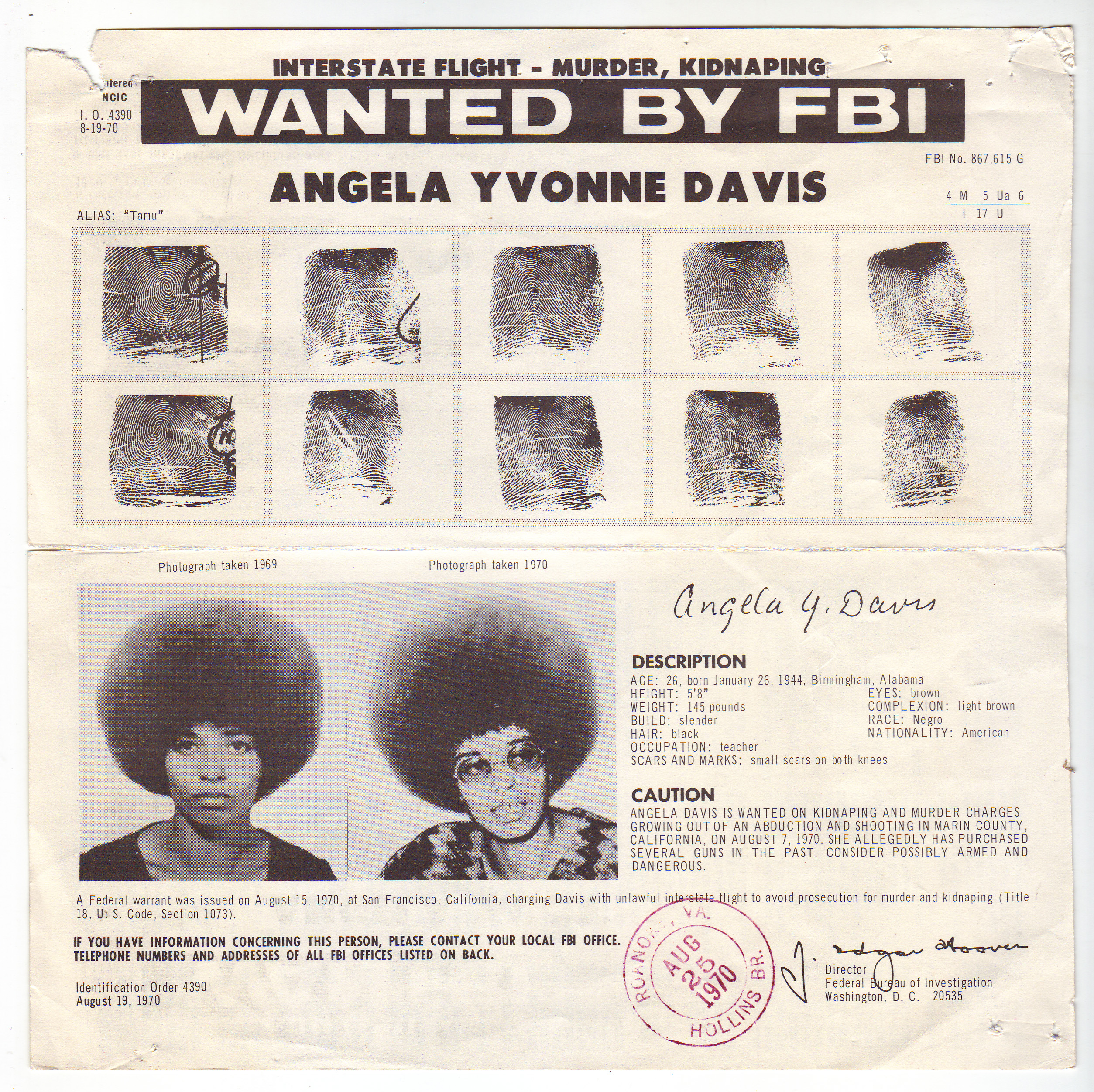
Another significant windfall for her collection came about 15 to 20 years ago when newspapers started liquidating their photo archives. Tellefsen was able to preserve thousands of Black Panther and Angela Davis Newswire photographs, some of which are on display in Seize the Time.
“I started to see with all these pieces of the puzzle of her life story [how] her path was beginning to be reconstructed in a visual way,” Tellefsen says. “I started to look for more material and more threads. And as I embraced it as an archiving project, there was no detail too small.”
In the final room of the exhibit, I flip through binders of more — somehow still more! — documents and images that didn’t make the cut to be hung on the walls. It’s striking, says Tellefsen, “that one person could generate so much material, you know, pre-internet.”
“She’s not a Kardashian, she’s not a president,” she says. “It’s like, really, what did it mean for a young Black woman from America to be a symbol all around the world?”
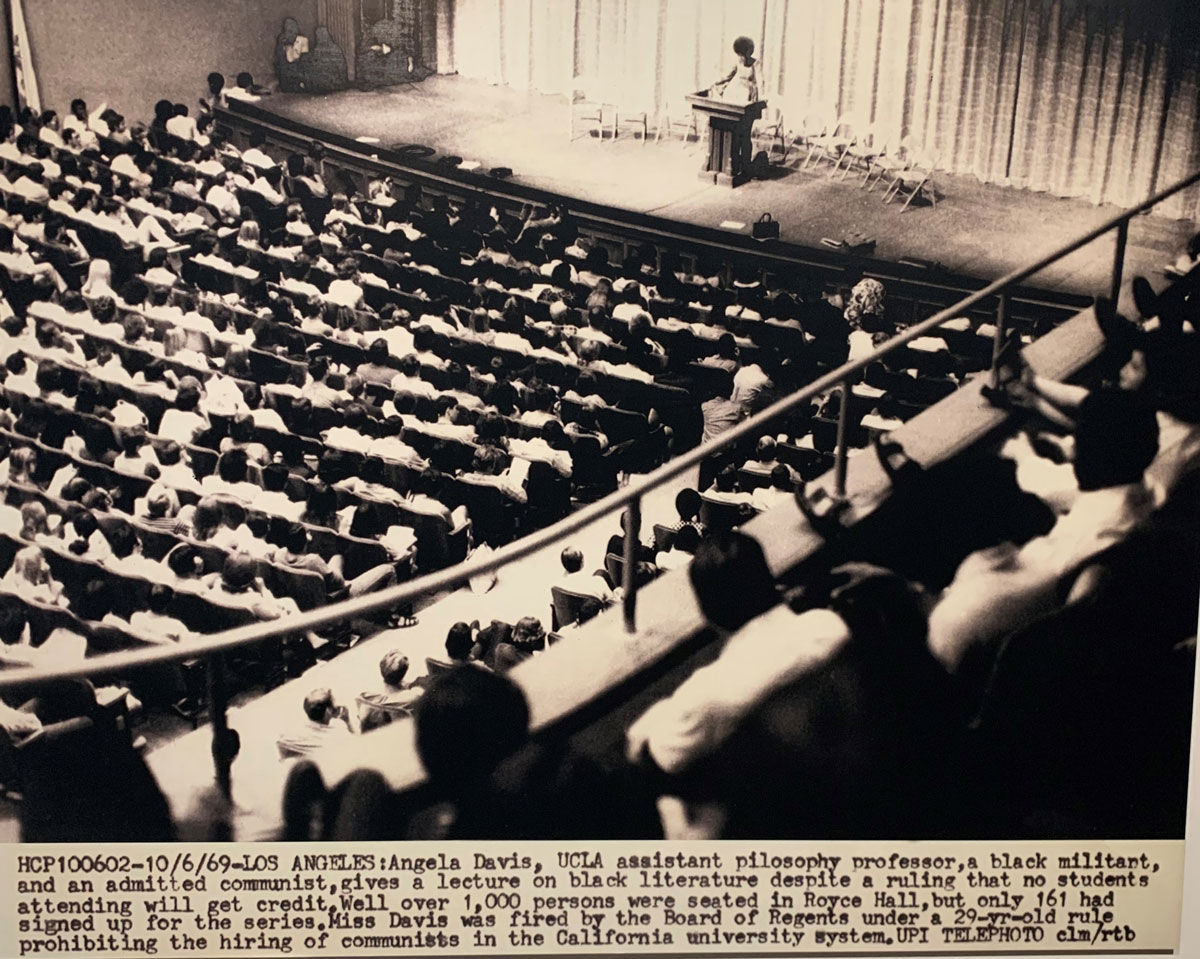
‘I was inspired to take action’
Angela Davis’ courage of conviction meant something special to my mother, Andrea Proehl. As a 21-year-old senior at UCLA in 1969, she served as a teaching assistant for a class taught by the then 25-year-old Angela Davis. So of course I took my mother to see the exhibit. She was struck by the very first image in the exhibition, which shows Angela Davis giving a lecture at UCLA’s Royce Hall in 1969.
“I remember we had a meeting of all the TAs on the lawn,” my mother recalls. “She was just very captivating as she was speaking to us. And it was not anything about the mechanics of the class. She was really speaking to us about the sense of responsibility as a human being on this planet, as well as being a good citizen.”
Davis taught in the philosophy department at UCLA until the UC Regents fired her for being a communist. My mother said there was a big uprising in the free speech area of campus when the news came down: “The Black Student Union was representing and everybody was out in force.”
Davis’ image still stirs feelings of my mother’s time as a young woman, energized by Davis and coming into her own. “Whenever I see her silhouette – you always know it’s her,” my mother reflects. “Always makes me happy in some way. Not so much brings a smile, but just good memories and I think [it] was such a good growth period for me.”
She adds, “I was inspired to take action and not just sit and watch.”
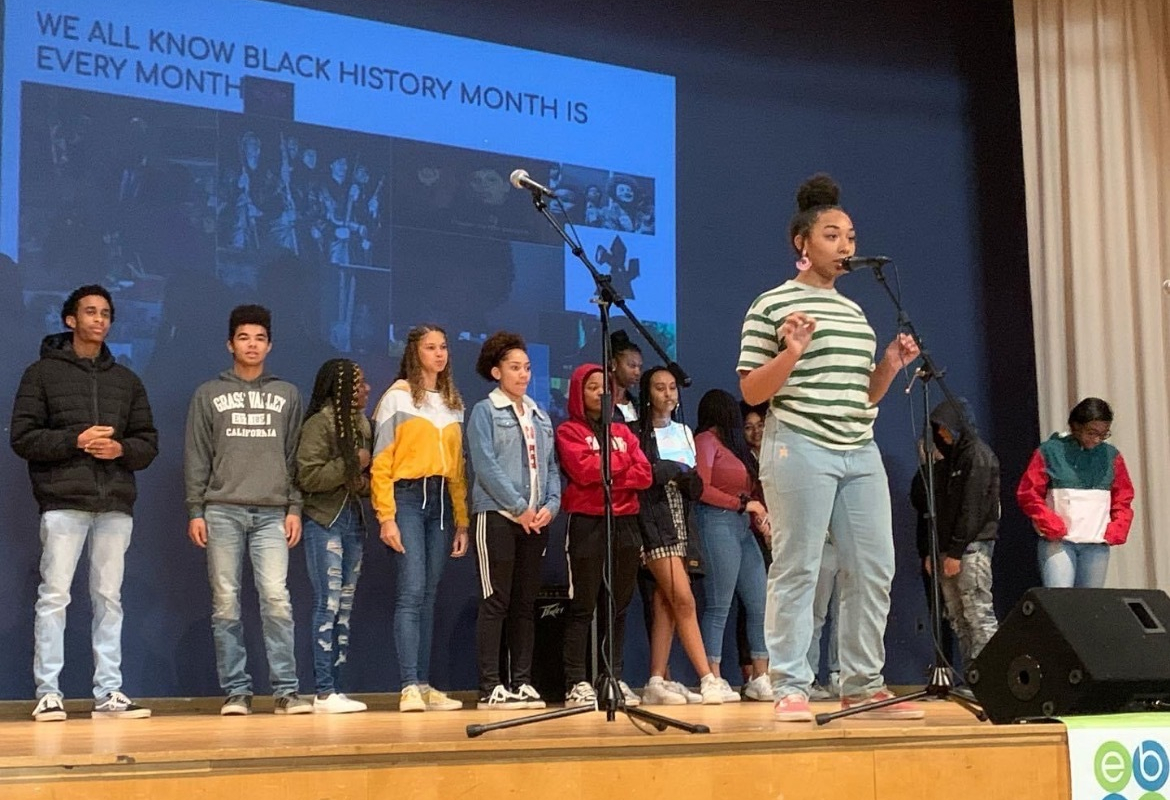
Davis’ enduring influence
Today, Davis remains an influential activist and catalyst for change for younger generations. This is clear from Erica Persons, a 19-year-old Laney College student, who I spoke with during her visit to the museum.
“Auntie Angela, there she go!” Persons exclaims after taking in the show’s images. “She’s just so powerful in so many ways. It was a very meaningful and sacred experience to see her in that exhibit.”
Persons interns for the organization RJOY: Restorative Justice for Oakland Youth, founded by Fania Davis, Angela Davis’ sister. Persons also started and led two Black Student Unions at two different schools during her high school years, inspired by Davis and the Black Panther Party.
For Persons, Davis is an inspiration. “She’s just influenced me a whole lot just to speak out and not just be a bystander,” she says.

And it’s not just Davis’ past actions that speak to the present. Persons points to Davis’ continued presence in the community and ongoing commitment to fighting for social justice. She remembers being at an Oakland rally for George Floyd in 2020 that Davis attended.
“She popped out and was talking to us and I just thought that was super meaningful ’cause she’s still very active in the community,” Persons says. “You know, she didn’t just leave.”
When we head out from the exhibit, Persons pauses to read one more placard in the show and learns something new: “She grew up in Alabama. I never knew that.” Persons always thought Davis was from Oakland. It’s no matter, though: “She still a Town legend.”

‘Angela Davis – Seize the Time’ is on view at the Oakland Museum of California through June 11, 2023. Details here.

